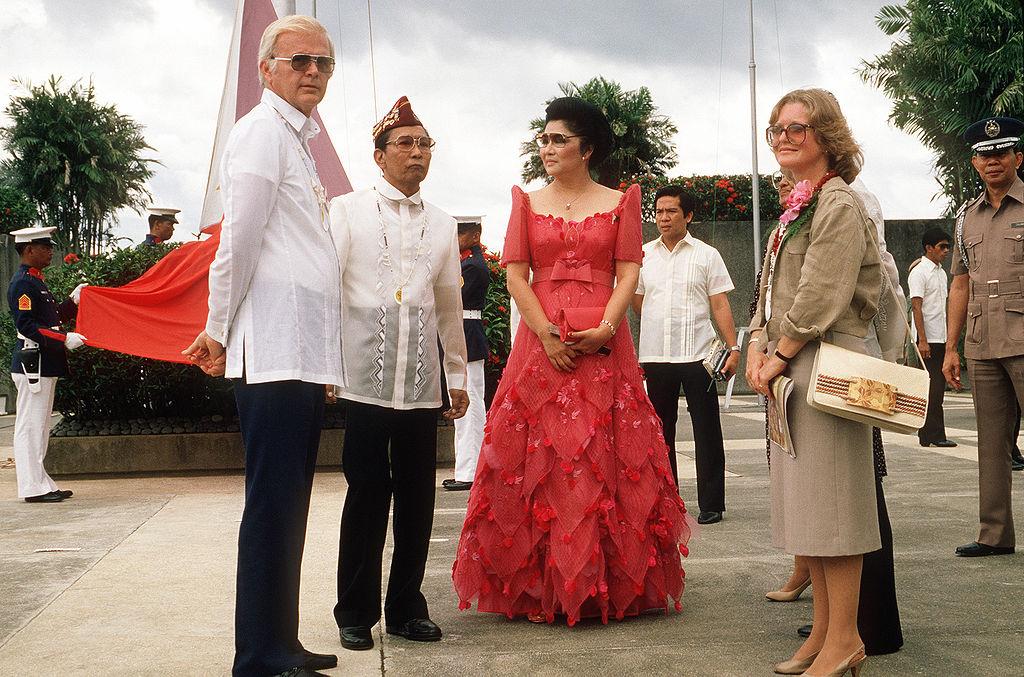Whose institution is the most powerful in the Philippines today? Whose views, regardless of their form or origin or soundness, are taken as almost gospel truth? Around which institution does the blame or praise always get passed around?

It is the imperial Presidency, enshrined in its pervasive role by the outdated and obsolete 1987 Constitution.
The history of the presidential system goes back to the time of the American administration of the Philippines, and even before that to the time of the all-powerful and mighty datus and rajas ruling across a multitude of principalities across different locales and islands in the pre-colonial era.
It is characterized mainly by a preference for one single decision-making potentate, elected separately from the legislature, always the head of state, and treated by the people and usually his or her supporters as a demi-god who can do almost nothing wrong.

This system of government is replicated even in the structure of local government units, cities, municipalities, and even barangays.
Now there really is a massive problem with this structure, as a lot of Filipinos have this god-making, messiah-seeking, and Hollywood-reinforced fixation with idolizing strong leaders who with competence and compassion protect, rescue, save, and provide for their people while remaining a unifying figure at the same time.
Philippine history provides evidence that such abilities rarely or do not at all coincide in the same, feeble human being. As much as a person works to develop himself or herself, it is difficult to carry out the delicate balancing act of decisive governmental drudgery and keeping everyone on board.
One of the salient problems with this rotten system is what Prof. Kasuya calls in her book the “presidential bandwagon”, or the phenomenon of politicians in the legislature and local government units to jump ship to a new president’s political vehicle for their own interest and then do it all over again after the president’s term of office expires.
This, combined with the awkwardness of legally barring re-elections for the president, weakens politics into a personality-led charade instead of the intellectual battle of policies it was intended and fully made out to be leading to the stunting of political party development in the Philippine context.
In the Philippine context, the presidency is also left not scrutinized by the legislature owing most of the time to their alignment with and fear of its awesome powers. While the nations of the world push ahead and progress through the competition of ideas, the retention of the barriotic and parochial mindset of the datus and the rajas of yore is continued, a troubling scenario.
And then there is the threat of the “split-government” or gridlock scenario. Not being restricted to the local context (although admittedly this example happens a lot), the government of the United States provides a clear picture of administrative and policymaking gridlock. When the separate executive and legislative arms are controlled by opposing parties, then it becomes difficult to tackle important issues requiring action by the government.
Legislation is impeded by the threat of a veto from the executive, and conversely executive priorities can be obstructed by a Congress that works in the opposite direction. Picking fights with other branches of government is a fixture of presidential systems, especially when there is no ideological unity or cohesiveness in its political branches.
The issue on how to remove a non-functioning, lousy executive is also a downside to the presidential system. Most of the systems have it in impeachment, a highly divisive process usually requiring a large amount of votes from the lawmaking body to remove the executive from his or her position.
This is a process easily open to abuse, misuse, and ironically, uselessness as in the respective cases of Joseph Estrada, Bill Clinton, and Andrew Johnson whose impeachments passed to the upper chambers of their legislatures but did not meet the required amount of votes to be removed from office, the former having been ousted in another “people power” uprising.
By relying upon and giving too much power and authority to a single, unitary figure, the state and its institutions are beholden to his or her whims and caprices on bad days to the exclusion, disappointment, and loss of other sectors of the population. The president, amassing all the powers of state and being its head, and with his position separate from legislative scrutiny without his initiatives being meaningfully and intelligently questioned and perhaps improved later on, bears the burden of administration and governance by simultaneously remaining the head of government and in charge of its day to day affairs.
The role of head of government is more often a political one, used to making tough decisions, some tough enough to alienate and disappoint some sectors of the population. As president, the officeholder is akin to an absolute monarch elected for a certain period of time, given virtually free reign to impose the imperial presidency’s will upon both the machinery of government and the people, who are supposed to hold the power in a democratic and republican state. And when this happens, conflicts tend to happen as well.
By concentrating power instead of diffusing it and administering the same equitably, presidential systems create the perfect breeding ground for dictatorships, abusers of power, and a divisively rancorous political culture amongst the people it is supposed to serve. It is no wonder, therefore, that the tail-end of every index measuring economic, structural, and political stability almost always features states with presidential systems.
It is my hope, advocacy, and mission that this country and other institutions therein will one day break away from this crass method of governing, and embrace more inclusive ways and means in approaching the affairs of state sooner rather than later.

